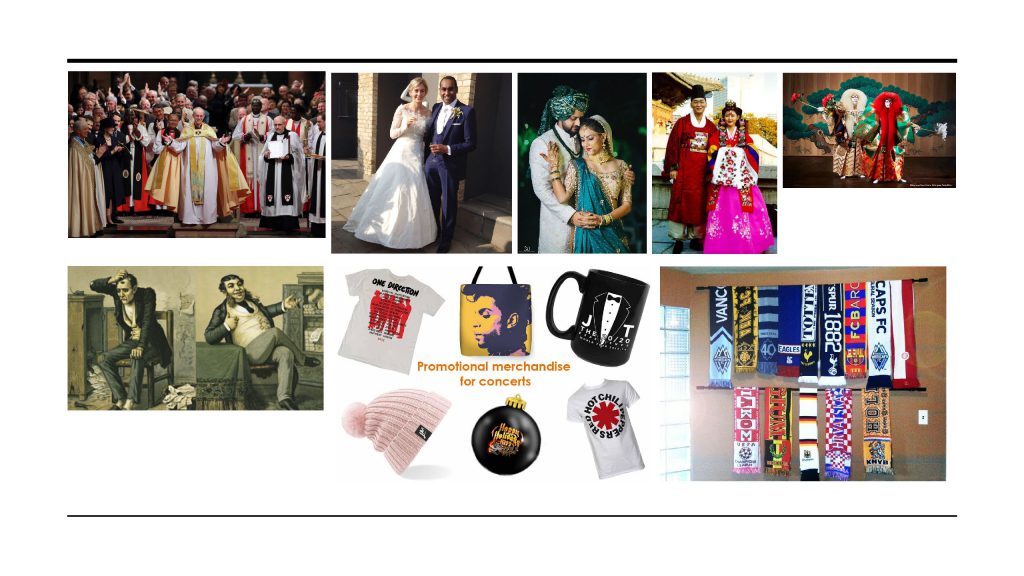I did some research into the symbolism, usage and evolution of clothes and found that in recent years clothing has become more about identity then survival.
Slide 3
Textiles have been used for survival ever since we as a species mass migrated from Africa. Without textiles there is no way we would have been able to survive other climates and conditions.
Slide 4
Clothing was one of the most basic essentials we as a species invented for protection. They provide us with protection from cold, sun exposure and protection for the skin from damage.
Tents and other makeshift homes were essential in providing us with a quick and easy way of transporting shelter from one place to another allowing us to gather more food.
Textile hats and parasols shield us from the sun and heat and allow us to work during hot weather.
A more recent trend has been that of facemasks that have been used to help curb the spread of viruses and diseases. Textiles have been used for survival ever since they were invented and without them we would function very differently as a species.
Slide 5
Textiles evolved beyond survival purposes, and different cultures used clothing to personalise their sense of society and independence from other groups.
Slide 6
In religion, clothing plays a very significant role. Different fabrics and arrangements can tell you instantly of where a person ranks in that religion. This is true in most religions despite evolving separately from each other.
In traditional ceremonies people from different cultures can wear vastly different clothing. The traditional white wedding dress in the west is vastly different to the traditional Korean wedding hanbok. They are both intended for the same reason but due to cultural differences they have both evolved differently. This is based on traditional cultural values as well as modern day fashion. It should be said. that a modern Korean wedding may have both a hanbok and a western style dress. These traditions change with modern fashions.
Textiles are also used to distinguish between classes within a society. In the Victorian era clothing was a direct show of wealth and status. Ill fitting damaged clothes would signify someone as less well off.
In more modern times we see merch being used to distinguish ourselves as part of a fanbase. Same is said of sports merchandise. Clothing being used to align yourself to a group is not something new, but the way we are using it, is.
Slide 8
Textiles as communication is related very closely to textiles in symbolic cultural usage. A lot of countries have a wide variety of styles and clothing that allow someone to communicate to others through their personal dress.
Uniforms are used to communicate a difference in rank or allegiance and function as a very quick way of identifying someone as a threat or an ally. More literally, flags were used to send messages in the form of a flag alphabet. It also allows us to identify at a glance different countries using their national flags.
We have also used textiles to communicate stories and fables. This ranges from parades with people in elaborate costumes, to unique woven fabrics all the way to basics such as embroidery and tapestry.
Textiles have been used as semiotics which is the conveyance of a message through a sign. They can communicate great personal detail about an individual person, an organisation or even represent an entire country.
Next Steps
The feedback I received from my presentation led me to pursue textiles as communication as a key feature in my interest and design.








